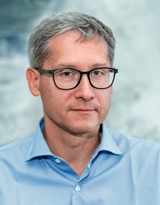Features of the choice of factor space in the estimation and prediction of the state of a complex object
https://doi.org/10.17586/0021-3454-2022-65-12-920-924
Abstract
Modeling of complex objects is always associated with the solution of problems not only of a methodo- logical, but also of a methodical nature. Such problems include, for example, the problem of the formation and use of the factor space in solving the problem of estimating and predicting the state of the complex object. As part of the problem statement, the main rules are formulated that an expert should use when choosing a factor space for the synthesis of various classes of models, including the example of constructing a fuzzy-possibility model of complex object based on explicit and implicit expert knowledge. An example of constructing a factor space and the corresponding model for a technological process associated with solid-phase roasting of a sulfide concentrate is considered using two fundamental- ly different approaches to describing this process. These approaches are the classical balance approach and fuzzy- possible approach. On a practical example, it is shown that a reasonable choice of the factor space composition and structure, especially dependent variables (output parameters), plays an important role in achieving the desired result - building a model for estimating and predicting the state of the complex object, which describes the process under study with the required degree of adequacy.
Keywords
About the Authors
A. V. SpesivtsevRussian Federation
Aleksander V. Spesivtsev — Dr. Sci., Associate Professor, St. Petersburg Institute for Informatics and Automation of the RAS, Laboratory of Information Technologies in System Analysis and Modeling; Leading Researcher
St. Petersburg
A. N. Pavlov
Russian Federation
Aleksander N. Pavlov — Dr. Sci., Professor; A.F. Mozhaisky Military Space Academy, Department of Automated Control Systems for Space Complexes; St. Petersburg Federal Research Center of the RAS, St. Petersburg Institute for Informatics and Automation of the RAS, Laboratory of Information Technologies in System Analysis and Modeling; Leading Researcher
St. Petersburg
References
1. Ignatiev M.B., Marley V.E., Mikhailov V.V., Spesivtsev A.V. Modelirovaniye slaboformalizovannykh sistem na osnove yavnykh i neyavnykh ekspertnykh znaniy (Modeling Weakly Formalized Systems Based on Explicit and Implicit Expert Knowledge), St. Petersburg, 2018, 430 p. (in Russ.)
2. Spesivtsev A.V. Metallurgicheskiy protsess kak ob"yekt izucheniya: novyye kontseptsii, sistemnost', praktika (Metallurgical Process as an Object of Study: New Concepts, Consistency, Practice), St. Petersburg, 2004, 307 p. (in Russ.)
3. Mills F.C. Statistical methods, NY, Columbia univ., 1924.
4. Miller G.A. The Psychological Review, 1956, vol. 63, рр. 81–97.
5. Okhtilev M.Yu., Sokolov B.V., Yusupov R.M. Intellektual'nyye tekhnologii monitoringa i upravleniya strukturnoy dinamikoy slozhnykh tekhnicheskikh ob"yektov (Intelligent Technologies for Monitoring and Controlling the Structural Dynamics of Complex Technical Objects), Moscow, 2006, 410 р. (in Russ.)
6. Astafiev A.F., Alekseev Yu.V. Okislitel'nyy obzhig nikelevykh sul'fidnykh poluproduktov v kipyashchem sloye (Oxidation Roasting of Nickel Sulphide Intermediates in a Fluidized Bed), Moscow, 1982, 175 р. (in Russ.)
7. Spesivtsev A.V., Kimyaev I.T. Large Systems Management, Moscow, 2008, no. 21, рр. 165–172. (in Russ.)
Review
For citations:
Spesivtsev A.V., Pavlov A.N. Features of the choice of factor space in the estimation and prediction of the state of a complex object. Journal of Instrument Engineering. 2022;65(12):920-924. (In Russ.) https://doi.org/10.17586/0021-3454-2022-65-12-920-924





























